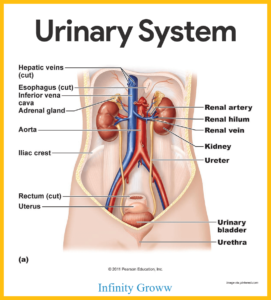-
Introduction
- Definition and Overview of the Skeletal System
- Historical Significance and Evolution
-
Anatomy of the Skeletal System
- Bones: The Fundamental Building Blocks
- Classification of Bones
- Bone Structure and Composition
- Bone Development and Growth
- Joints: Connecting Bones for Mobility
- Types of Joints
- Joint Structure and Function
- Joint Disorders
- Connective Tissues: Ligaments, Tendons, and Cartilage
- Functions and Roles
- Importance in Movement and Stability
- Bones: The Fundamental Building Blocks
-
Physiology of the Skeletal System
- Functions of Bones Beyond Support
- Support and Framework
- Protection of Organs
- Facilitation of Movement
- Blood Cell Production
- Mineral Storage and Homeostasis
- Contribution to Shape and Form
- Functions of Bones Beyond Support
-
Embryonic Development and Growth
- Formation of the Skeleton in Embryos
- Growth and Changes During Childhood and Adolescence
- Aging and Skeletal Changes in Adulthood
-
Common Skeletal System Disorders
- Osteoporosis
- Causes, Symptoms, and Treatment
- Osteoarthritis
- Causes, Symptoms, and Treatment
- Rheumatoid Arthritis
- Causes, Symptoms, and Treatment
- Fractures
- Types, Causes, and Treatment
- Other Disorders: Scoliosis, Kyphosis, and more
- Osteoporosis
-
Maintenance and Care of the Skeletal System
- Healthy Lifestyle Practices
- Balanced Diet for Bone Health
- Importance of Regular Exercise
- Safety Precautions and Injury Prevention
- Medical Approaches to Skeletal Health
- Diagnostic Procedures
- Surgical Interventions
- Rehabilitation and Physical Therapy
- Holistic Approaches, including Ayurvedic and Traditional Practices
- Healthy Lifestyle Practices
-
Conclusion
- Recap of the Skeletal System’s Importance
- Recommendations for Skeletal Health and Well-being
Introduction: The skeletal system
The skeletal system is an intricate and remarkable network of bones, cartilage, ligaments, and tendons that form the framework of the human body. It plays a crucial role in providing support, protecting vital organs, enabling movement, and even contributing to blood cell production. Understanding the functions, components, and common diseases associated with the skeletal system is essential for appreciating its significance in maintaining overall health and well-being.

Functions of the Skeletal System: Your Body’s Sturdy Support System
The skeletal system is like the strong framework of a building that holds everything together. It consists of bones, cartilage, ligaments, and tendons, working together to perform vital functions in our body. Let’s explore the functions of the skeletal system in a simpler and more understandable form, along with its individual roles, importance, and fascinating facts:
- Support and Structure:
- Function: The skeletal system provides support and structure to our body, like a scaffold, giving us our shape and keeping us upright.
- Role: Bones act as the pillars, supporting muscles, organs, and other tissues, so we can move and stand tall.
- Importance: Without this support, our body would be a floppy mess, unable to function properly.
- Protection:
- Function: The skeletal system acts like a suit of armor, protecting our delicate organs from harm.
- Role: Bones, like the skull, ribcage, and spine, shield our brain, heart, and spinal cord, keeping them safe from injuries.
- Importance: This protection is vital for our survival, as it prevents damage to critical organs.
- Facilitating Movement:
- Function: The skeletal system works closely with muscles to create movement in our body.
- Role: When muscles pull on bones, they act as levers, allowing us to walk, run, dance, and do all sorts of activities.
- Importance: Without this teamwork, we would be immobile and unable to perform simple tasks.
- Blood Cell Production:
- Function: Some bones have a special job of making blood cells, like a factory producing workers.
- Role: The soft, spongy part inside bones produces red and white blood cells and platelets, essential for carrying oxygen and fighting infections.
- Importance: This process ensures we have a healthy blood supply to keep our body functioning optimally.
- Mineral Storage and Homeostasis:
- Function: The skeletal system is like a mineral bank, storing important minerals.
- Role: Bones store calcium and phosphorus, essential for bone strength and other bodily functions.
- Importance: When the body needs these minerals for other functions, bones release them, helping maintain balance in the body.
- Shape and Form:
- Function: The skeletal system gives us our unique appearance and body shape.
- Role: Everyone’s skeleton is different, influenced by factors like genetics and lifestyle.
- Importance: This individuality makes us who we are, with our own distinct features.
The skeletal system is undoubtedly a remarkable and essential part of our body. It provides support, protection, and enables movement, all while producing crucial blood cells and storing essential minerals. By taking care of our bones through a balanced diet, exercise, and safety precautions, we can keep our sturdy support system in top shape and lead a healthy, active life.
Components of the Skeletal System: Building Blocks for a Strong Body
The skeletal system is like a puzzle made up of various components that fit together to create a robust structure. These components work in harmony to support, protect, and enable movement in our bodies. Let’s explore the components of the skeletal system in simpler and more understandable form, along with their individual functions, roles, importance, and fascinating facts:

- Bones:
- Function: Bones are the main building blocks of the skeletal system, providing the framework for our body.
- Role: They give our body its shape, support muscles and organs, and protect vital organs from injury.
- Importance: Without bones, we would be like wobbly jelly, unable to move or perform everyday tasks.
- Fascinating Facts: The adult human body contains 206 bones. The smallest bone in the body is the stapes bone in the ear, while the largest is the femur in the thigh.
- Cartilage:
- Function: Cartilage is a soft and flexible connective tissue that cushions and protects the ends of bones.
- Role: It acts like a shock absorber, reducing friction between bones and allowing smooth joint movement.
- Importance: Cartilage keeps our joints healthy and functional, allowing us to move without discomfort.
- Fascinating Facts: Cartilage is more flexible than bone and can be found in areas like the nose, ears, and between vertebrae.
- Ligaments:
- Function: Ligaments are tough, elastic bands that connect bones to other bones, stabilizing joints.
- Role: They provide support and prevent excessive movement, reducing the risk of joint injuries.
- Importance: Without ligaments, our joints would be unstable, making movements risky and painful.
- Fascinating Facts: Ligaments can be injured through sudden twists or strains, leading to sprains.
- Tendons:
- Function: Tendons are strong fibrous cords that attach muscles to bones, enabling movement.
- Role: They transmit the force generated by muscles to the bones, allowing us to bend and stretch.
- Importance: Tendons are essential for all types of physical activities, from walking to playing sports.
- Fascinating Facts: Tendons are incredibly strong and can withstand high levels of tension.
- Bone Marrow:
- Function: Bone marrow is a soft, spongy tissue found inside bones, with two types: red and yellow.
- Role: Red bone marrow produces red and white blood cells and platelets, vital for the immune system and blood clotting.
- Importance: Yellow bone marrow stores fat and serves as a reserve for energy when needed.
- Fascinating Facts: Red bone marrow is responsible for the formation of new blood cells throughout our lives.
The components of the skeletal system work together like a well-coordinated team, providing the structure, stability, and mobility needed for everyday activities. By understanding the roles of bones, cartilage, ligaments, tendons, and bone marrow, we can appreciate the complexity and importance of this amazing system that forms the basis of our bodies. Taking care of our skeletal system through a balanced diet, regular exercise, and safety measures ensures that we maintain a strong and healthy foundation throughout our lives.
Diseases Associated with the Skeletal System: Ensuring Bone Health and Well-being
The skeletal system is a vital component of our body, providing structural support and protection for organs, facilitating movement, and storing minerals like calcium and phosphorus. However, various diseases can affect the skeletal system, compromising its integrity and function. Understanding these diseases, their causes, symptoms, treatment options, and Ayurvedic approaches is essential for maintaining bone health and overall well-being. Let’s explore some common skeletal system diseases:

- Osteoporosis:
- Definition: Osteoporosis is a condition characterized by weakened bones with reduced bone mass and density. As a result, bones become brittle and more susceptible to fractures.
- Cause: Osteoporosis is often age-related and more prevalent in postmenopausal women due to decreased estrogen levels. Other risk factors include a lack of calcium and vitamin D, sedentary lifestyle, smoking, and certain medications.
- Symptoms: Osteoporosis is often called the “silent disease” because it may not cause noticeable symptoms until a fracture occurs. Common fracture sites include the spine, hips, and wrists.
- Treatment: Conventional treatment includes lifestyle changes like a balanced diet, exercise (weight-bearing and muscle-strengthening), and supplements (calcium and vitamin D). Medications to slow bone loss and promote bone formation may also be prescribed.
- Ayurvedic Approach: Ayurveda emphasizes a holistic approach to bone health. Ayurvedic herbs like Ashwagandha, Shatavari, and Guggulu are believed to promote bone density. Consuming calcium-rich foods, Ayurvedic bone tonics, and following a Vata-pacifying diet can be beneficial.
- Osteoarthritis:
- Definition: Osteoarthritis is a degenerative joint disease that affects the cartilage, the protective tissue covering the ends of bones in joints. Over time, the cartilage wears down, leading to pain, stiffness, and reduced joint mobility.
- Cause: Osteoarthritis is commonly caused by aging, joint overuse, joint injury, and genetic factors. Excess body weight can also increase the risk of developing osteoarthritis in weight-bearing joints.
- Symptoms: Common symptoms include joint pain, stiffness (especially in the morning), swelling, and a crunching sensation during joint movement.
- Treatment: Conventional treatment aims to manage pain and improve joint function. It includes lifestyle modifications (weight management, low-impact exercise), physical therapy, pain relievers, and joint injections.
- Ayurvedic Approach: Ayurvedic therapies like Panchakarma (detoxification) and Abhyanga (oil massage) may help reduce inflammation and improve joint mobility. Turmeric, Boswellia, and Shallaki are traditional Ayurvedic herbs used for joint health.
- Rheumatoid Arthritis:
- Definition: Rheumatoid arthritis is an autoimmune disease that primarily affects the joints. It occurs when the body’s immune system mistakenly attacks healthy joint tissues, causing inflammation, pain, and joint damage.
- Cause: The exact cause of rheumatoid arthritis is unknown, but it involves a combination of genetic and environmental factors triggering the immune response.
- Symptoms: Symptoms include joint pain, swelling, morning stiffness, fatigue, and fever. Rheumatoid arthritis can also affect other organs, like the heart and lungs.
- Treatment: Conventional treatment includes medications to reduce inflammation and suppress the immune system, physical therapy, and lifestyle modifications.
- Ayurvedic Approach: Ayurveda focuses on balancing the doshas (Vata, Pitta, and Kapha) to manage rheumatoid arthritis. Herbal formulations containing Guggulu, Haridra, and Triphala may be used to support joint health.
- Fractures:
- Definition: Fractures are breaks or cracks in bones resulting from trauma, falls, or repetitive stress. Fractures can be classified as open (compound) or closed (simple) depending on whether the broken bone punctures the skin.
- Cause: Fractures occur due to accidents, sports injuries, osteoporosis, or medical conditions that weaken bones.
- Symptoms: Symptoms include pain, swelling, bruising, deformity, and difficulty moving the affected area.
- Treatment: Conventional treatment involves immobilization (splints, casts), realignment (manipulation), and, in severe cases, surgical intervention.
- Ayurvedic Approach: Ayurvedic therapies like application of medicinal oils and poultices may help promote bone healing. Ayurvedic bone tonics containing herbs like Arjuna, Bala, and Ashwagandha can be beneficial.
Importance of Addressing Skeletal System Diseases:
- Maintaining a healthy skeletal system is crucial for overall mobility, independence, and quality of life.
- Timely detection and treatment of skeletal diseases can prevent complications, reduce pain, and enhance bone strength.
- Combining conventional and Ayurvedic approaches may offer comprehensive care for skeletal system health.
Understanding the diseases associated with the skeletal system empowers us to take proactive measures for bone health. By adopting a healthy lifestyle, seeking medical advice when needed, and incorporating Ayurvedic practices, we can safeguard the foundation that supports our body and ensures our well-being. As always, it’s essential to consult healthcare professionals for proper diagnosis and personalized treatment plans.
Conclusion :
The skeletal system is a remarkable and vital part of the human body. Its functions go beyond providing support; it ensures our mobility, protects internal organs, and produces essential blood cells. Taking care of our skeletal system through a balanced diet, regular exercise, and preventive measures is crucial for maintaining bone health and overall well-being. By appreciating the intricate design and importance of the skeletal system, we can lead healthier and more active lives.







